Abstract
The repair detection procedure of Speck et al. (Appl. Microbiol. 29:549-550, 1975) was adapted for the enumeration of coliforms, fecal coliforms, and enterococci in seafood and environmental samples. Samples were pour plated with Trypticase soy agar, followed by a 1- to 2-h incubation to effect repair; the plates were then overlaid with the selective medium and incubated. Violet red bile agar and an incubation temperature of 45 degrees C were used as the selective conditions for fecal coliforms, and KF streptococcal agar was used for the enumeration of enterococci. The method was more efficient than the standard most-probable-number method for fecal coliform enumeration and also allowed enumeration of the injured cells, which might have remained undetected when selective medium in the most-probable-number method was used. The repair detection method effectively recovered the injured portion of the population of enterococci capable of growing on KF streptococcal agar. The repair enumeration method was not suitable for coliforms in marine samples because associative marine bacteria mimicked coliforms in violet red bile agar plates incubated at 35 degrees C. The marine bacteria did not grow at 45 degrees C and therefore did not interfere with fecal coliform enumeration.
Full text
PDF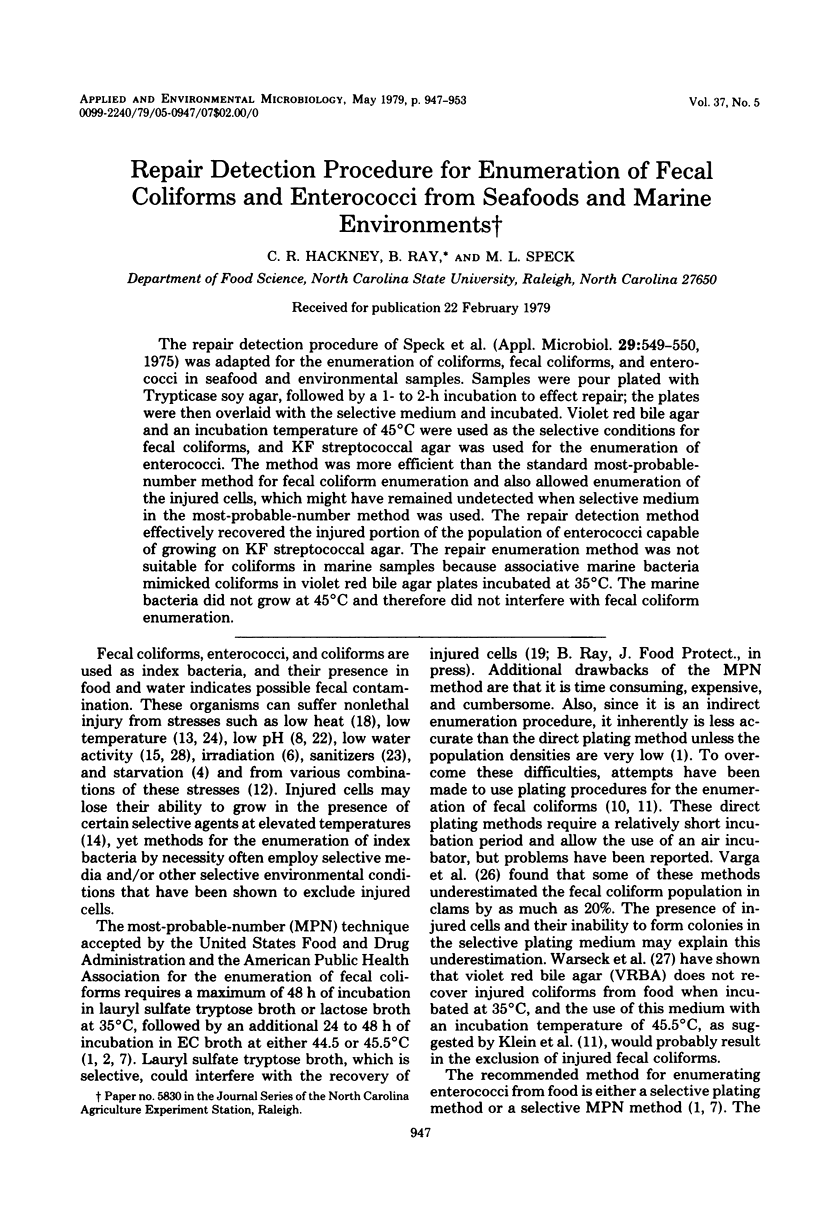
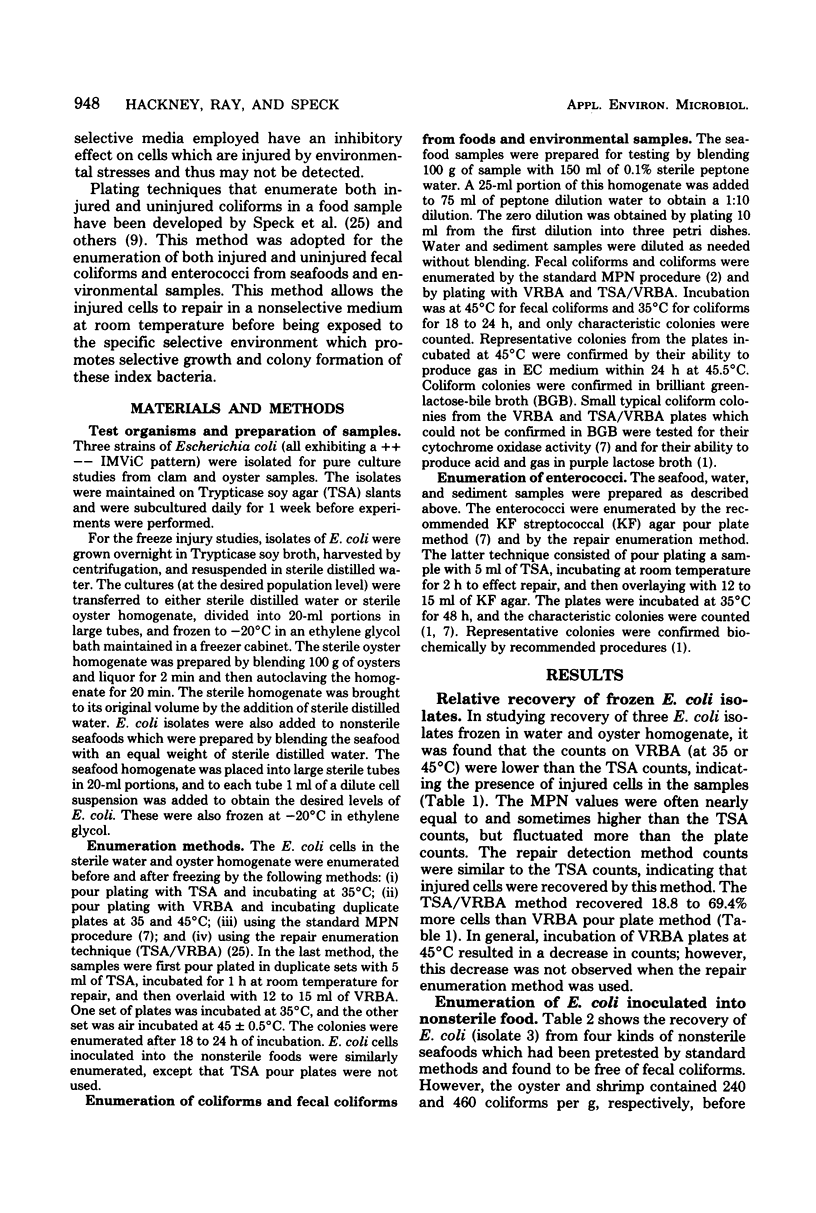
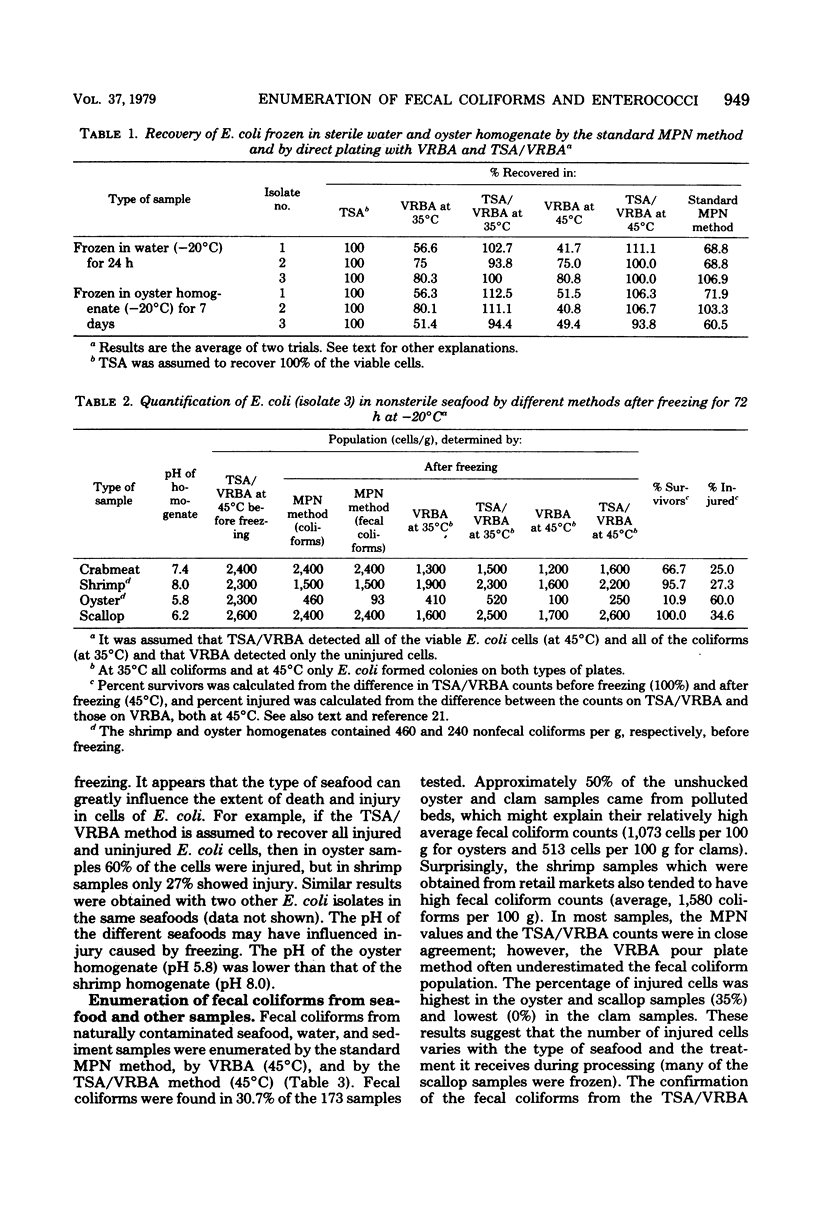
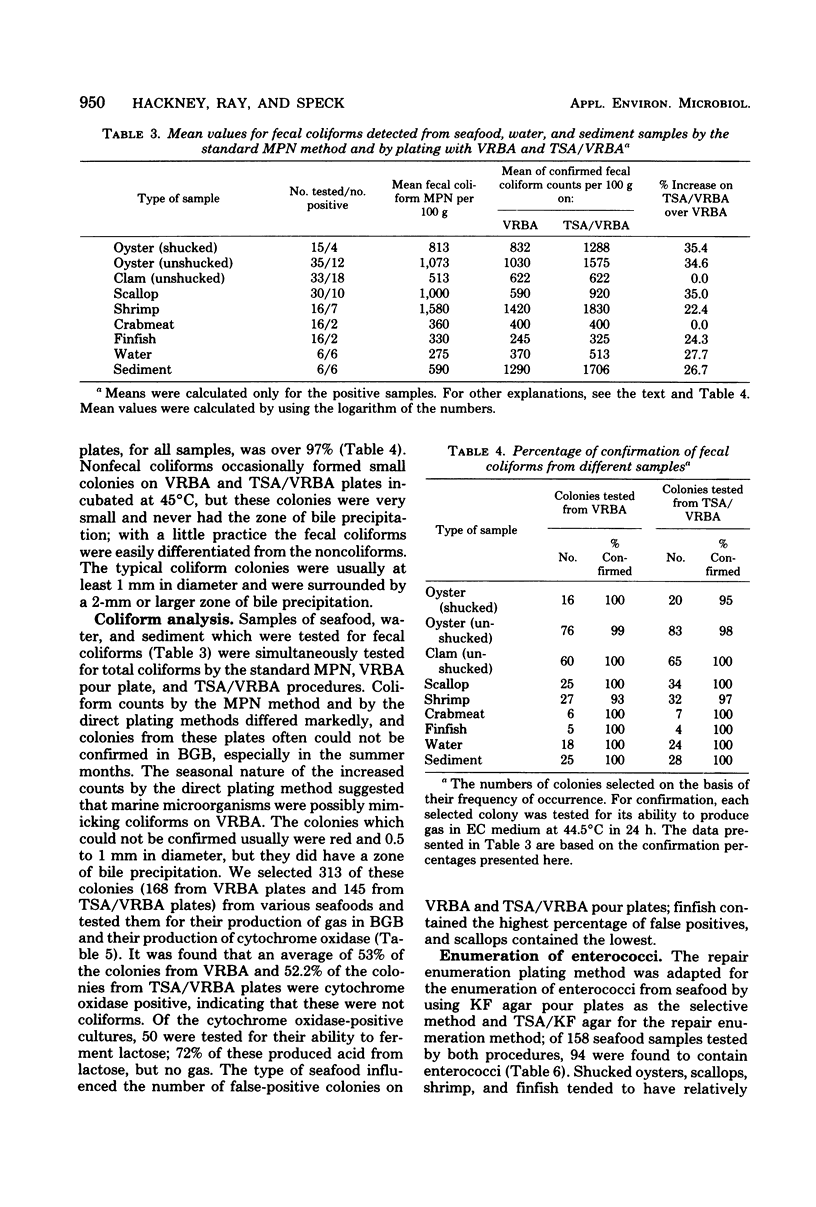
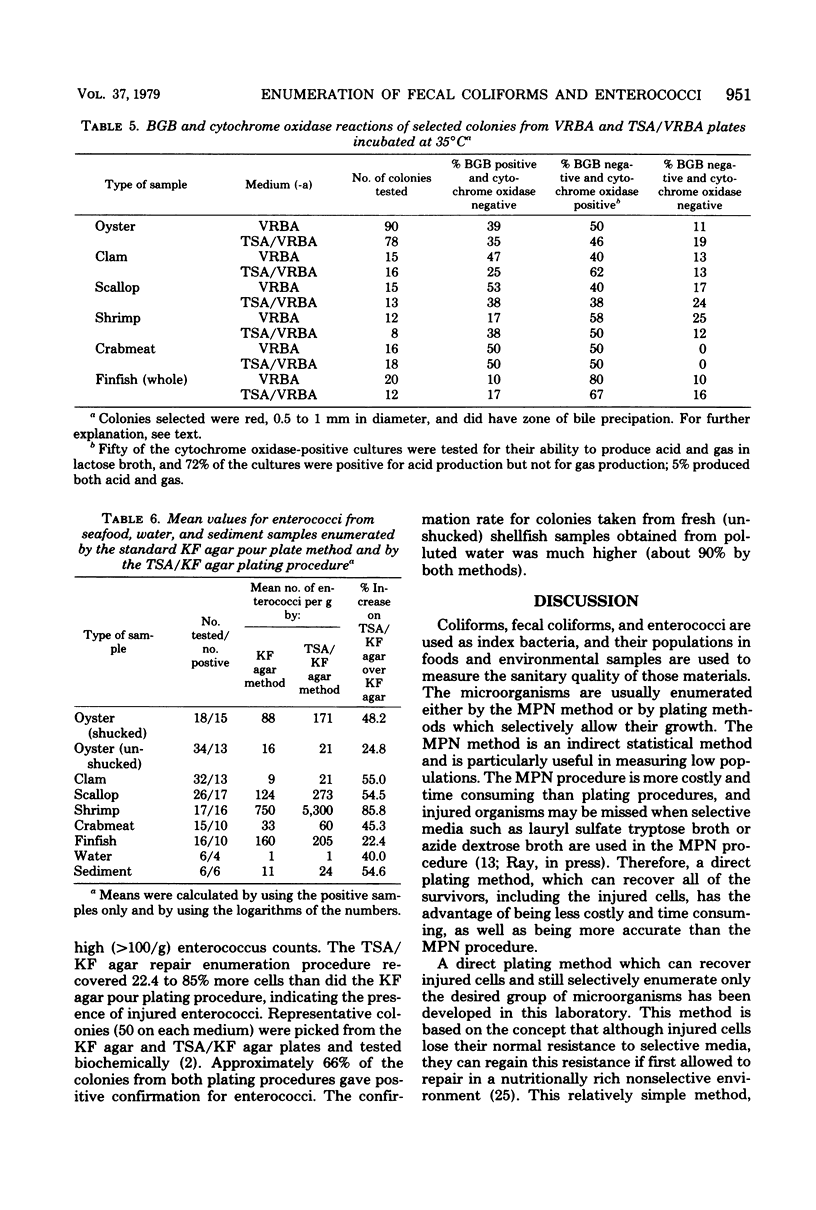
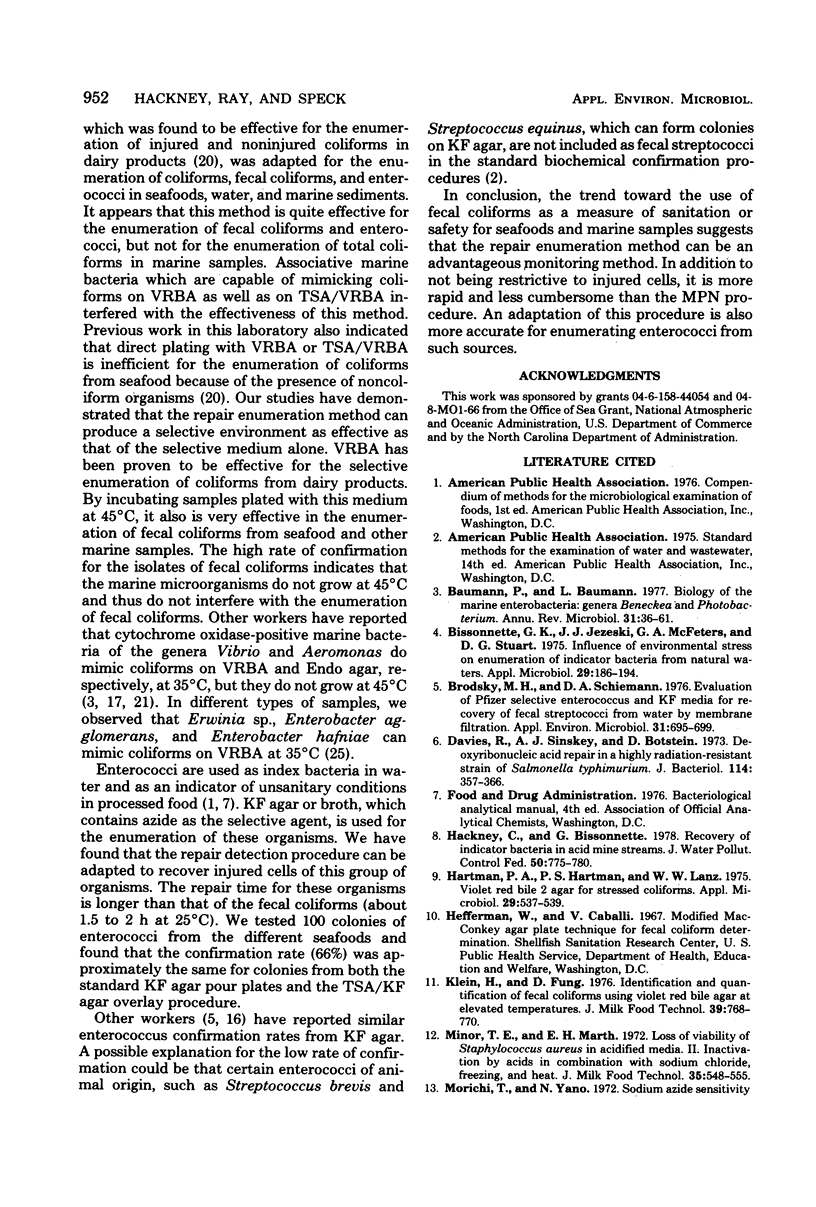
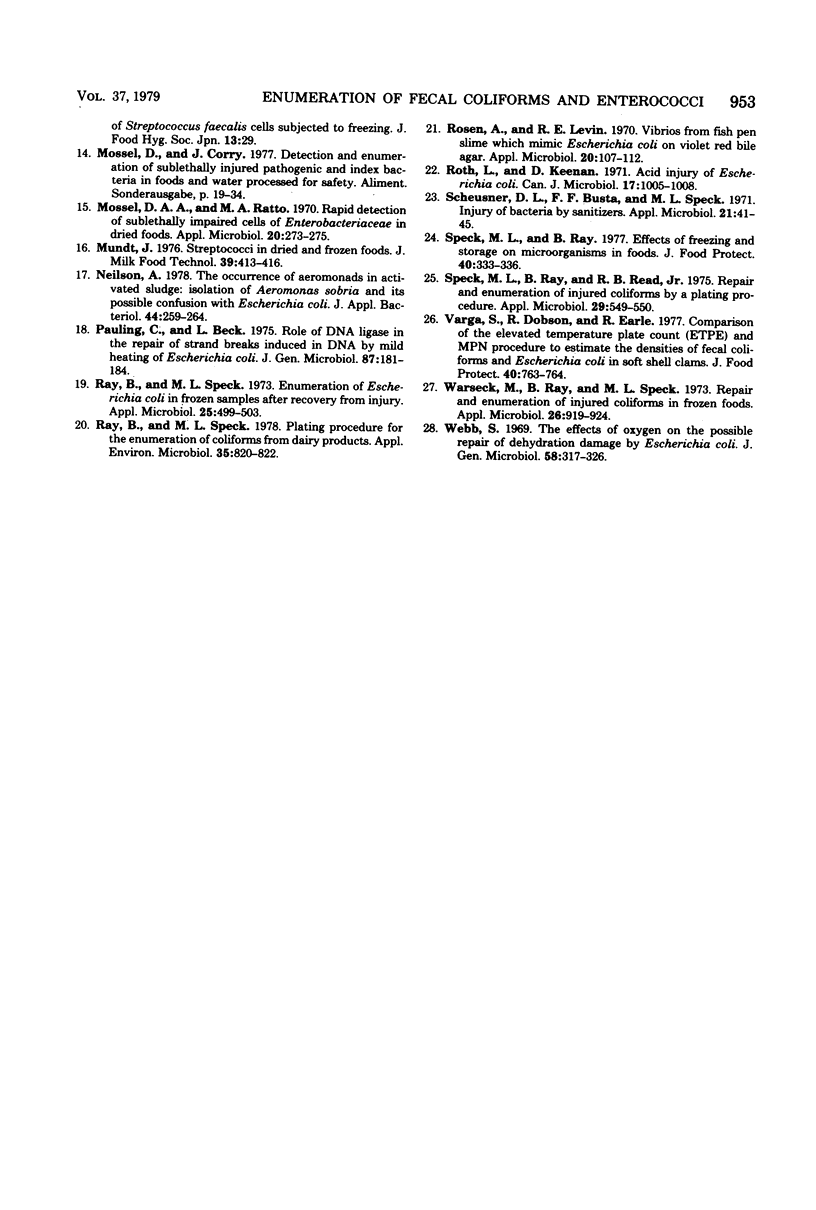
Selected References
These references are in PubMed. This may not be the complete list of references from this article.
- Baumann P., Baumann L. Biology of the marine enterobacteria: genera Beneckea and Photobacterium. Annu Rev Microbiol. 1977;31:39–61. doi: 10.1146/annurev.mi.31.100177.000351. [DOI] [PubMed] [Google Scholar]
- Bissonnette G. K., Jezeski J. J., McFeters G. A., Stuart D. G. Influence of environmental stress on enumeration of indicator bacteria from natural waters. Appl Microbiol. 1975 Feb;29(2):186–194. doi: 10.1128/am.29.2.186-194.1975. [DOI] [PMC free article] [PubMed] [Google Scholar]
- Brodsky M. H., Schiemann D. A. Evaluation of Pfizer selective enterococcus and KF media for recovery of fecal streptococci from water by membrane filtration. Appl Environ Microbiol. 1976 May;31(5):695–699. doi: 10.1128/aem.31.5.695-699.1976. [DOI] [PMC free article] [PubMed] [Google Scholar]
- Davies R., Sinskey A. J., Botstein D. Deoxyribonucleic acid repair in a highly radiation-resistant strain of Salmonella typhimurium. J Bacteriol. 1973 Apr;114(1):357–366. doi: 10.1128/jb.114.1.357-366.1973. [DOI] [PMC free article] [PubMed] [Google Scholar]
- Hartman P. A., Hartman P. S., Lanz W. W. Violet red bile 2 agar for stressed coliforms. Appl Microbiol. 1975 Apr;29(4):537–539. doi: 10.1128/am.29.4.537-539.1975. [DOI] [PMC free article] [PubMed] [Google Scholar]
- Mossel D. A., Ratto M. A. Rapid detection of sublethally impaired cells of Enterobacteriaceae in dried foods. Appl Microbiol. 1970 Aug;20(2):273–275. doi: 10.1128/am.20.2.273-275.1970. [DOI] [PMC free article] [PubMed] [Google Scholar]
- Pauling C., Beck L. A. Role of DNA ligase in the repair of single strand breaks induced in DNA by mild heating of Escherichia coli. J Gen Microbiol. 1975 Mar;87(1):181–184. doi: 10.1099/00221287-87-1-181. [DOI] [PubMed] [Google Scholar]
- Ray B., Speck M. L. Enumeration of Escherichia coli in frozen samples after recovery from injury. Appl Microbiol. 1973 Apr;25(4):499–503. doi: 10.1128/am.25.4.499-503.1973. [DOI] [PMC free article] [PubMed] [Google Scholar]
- Ray B., Speck M. L. Plating procedure for the enumeration of coliforms from dairy products. Appl Environ Microbiol. 1978 Apr;35(4):820–822. doi: 10.1128/aem.35.4.820-822.1978. [DOI] [PMC free article] [PubMed] [Google Scholar]
- Rosen A., Levin R. E. Vibrios from fish pen slime which mimic Escherichia coli on violet red bile agar. Appl Microbiol. 1970 Jul;20(1):107–112. doi: 10.1128/am.20.1.107-112.1970. [DOI] [PMC free article] [PubMed] [Google Scholar]
- Roth L. A., Keenan D. Acid injury of Escherichia coli. Can J Microbiol. 1971 Aug;17(8):1005–1008. doi: 10.1139/m71-160. [DOI] [PubMed] [Google Scholar]
- Scheusner D. L., Busta F. F., Speck M. L. Injury of bacteria by sanitizers. Appl Microbiol. 1971 Jan;21(1):41–45. doi: 10.1128/am.21.1.41-45.1971. [DOI] [PMC free article] [PubMed] [Google Scholar]
- Speck M. L., Ray B., Read R. B., Jr Repair and enumeration of injured coliforms by a plating procedure. Appl Microbiol. 1975 Apr;29(4):549–550. doi: 10.1128/am.29.4.549-550.1975. [DOI] [PMC free article] [PubMed] [Google Scholar]
- Warseck M., Ray B., Speck M. L. Repair and enumeration of injured coliforms in frozen foods. Appl Microbiol. 1973 Dec;26(6):919–924. doi: 10.1128/am.26.6.919-924.1973. [DOI] [PMC free article] [PubMed] [Google Scholar]
- Webb S. J. The effects of oxygen on the possible repair of dehydration damage by Escherichia coli. J Gen Microbiol. 1969 Nov;58(3):317–326. doi: 10.1099/00221287-58-3-317. [DOI] [PubMed] [Google Scholar]


